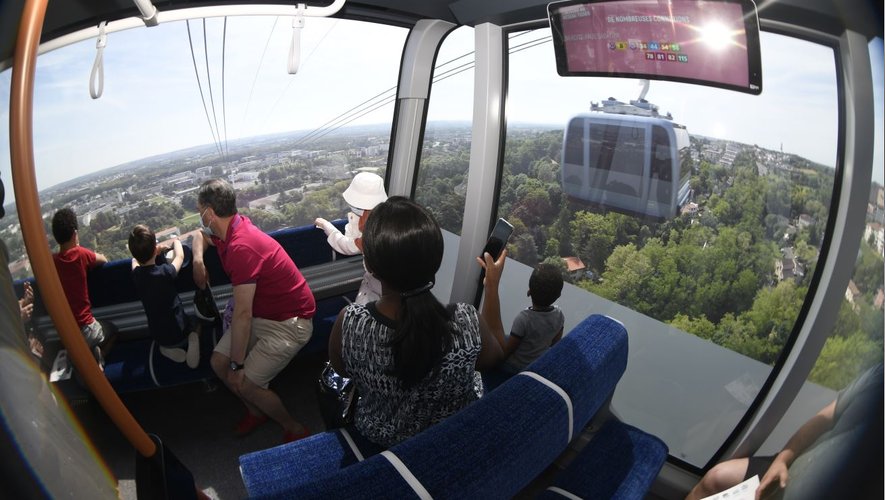The urban cable car directly connects the University Hospital of Rangueil and the Oncopole, in Toulouse. Téléo already transports patients and medical teams from one site to another.
1.6 million travelers have taken the urban cable car in one year, since it was put into service on May 13, 2022, according to Tisséo. More than 6,000 per day on weekdays today, including a lot of agents and practitioners from the Rangueil hospital and the Oncopole, to reach their place of work. And also patients who came for consultation, or even to be hospitalized.
Cheaper than an ambulance
For the past year, Téléo has directly linked the Paul Sabatier University, the Rangueil hospital of the CHU and the Oncopole-Claudius Régaud-CHU. “We could transport patients from Rangueil to the Oncopole and vice versa. It would cost less than a return ambulance, which costs around €250, and that’s our money,” suggests a doctor. “It is possible, we organized patient transport by TGV during the health crisis across France”.
But the proposal has already been applied, in practice, as confirmed by Ornella Bruxelles-Terriat, director of the Rangueil and Larrey hospital sites.
Streamline the patient journey
“The commissioning of Téléo has considerably streamlined the patient journey between the two hospital sites of Rangueil and the Oncopole, indicates Ornella Bruxelles-Tériat, “patients in outpatient or day hospital appointments use independently the cable car to reach the two sites. Patients who come from further afield, from other departments, or even from other regions, and are accommodated in a hospital hotel in Rangueil, at the “Le Vallon” reception center, organize their examinations in Rangueil and at the Oncopole and make their appointments using the services of Téléo”, continues the director of Rangueil and Larrey, “for hospitalized patients, the CHU organizes the movement of medical teams by Téléo in order to avoid the use of medical vehicles, transport cards have been provided to the medical teams so that they can intervene on the two sites face-to-face, even in the event of an emergency, without having to move the hospitalized patients, who can remain in their environment. We are not ruling out organizing, in the future, patient transfers by Téléo. We know how to recover a patient if an ambulance is blocked, but not if the cable car stops in the air”.

